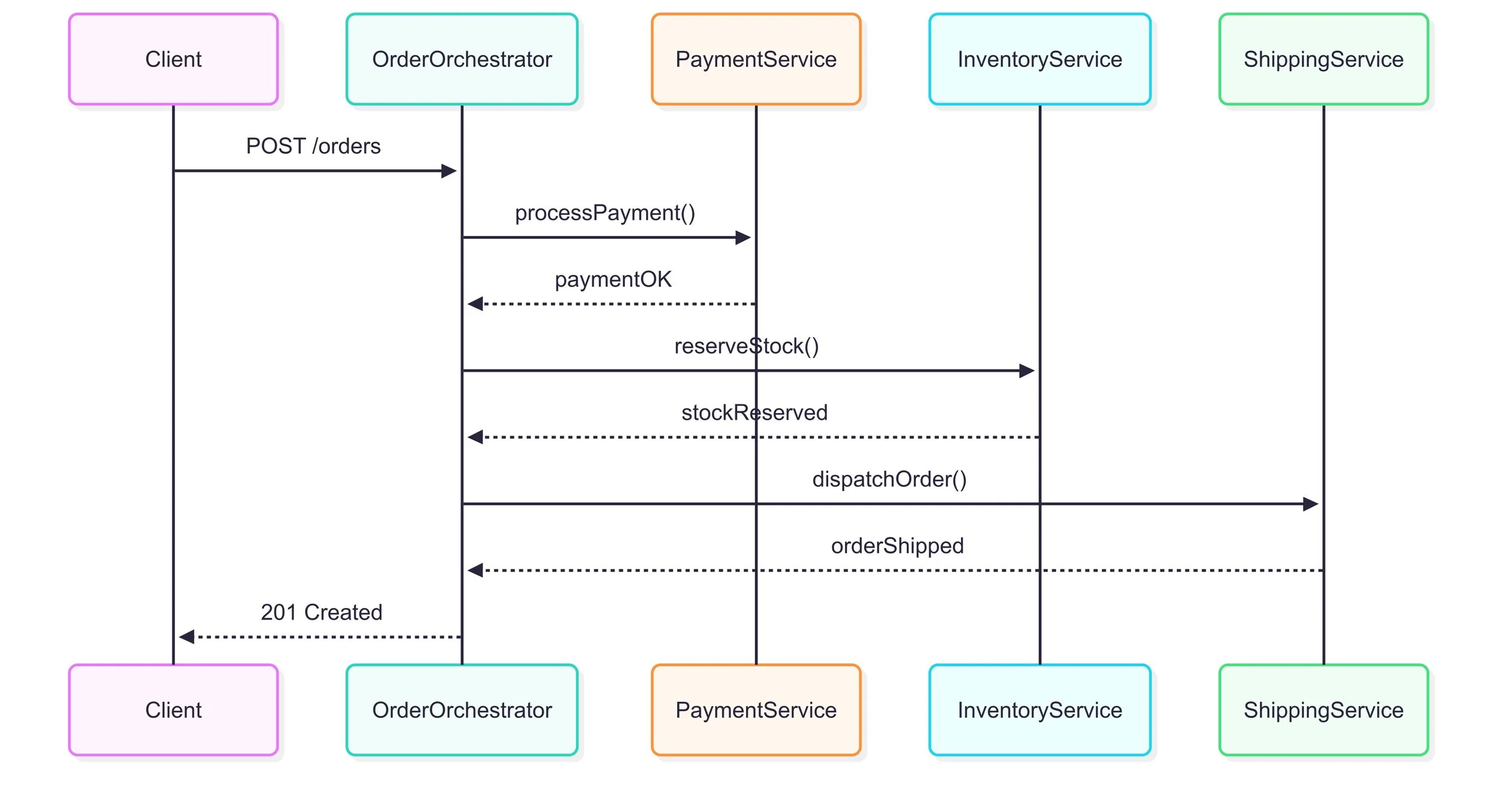Orchestration vs Choreography Who's directing your services
Your microservices are humming along, but how do they actually talk to each other to get things done? Is there a single, all-knowing Maestro directing the show, or is it more like a free-flowing jazz session where everyone just knows the rhythm? This choice between orchestration and choreography is one of the most critical decisions in your system's architecture.
1. The Core Problem: Coordinating Chaos
In a distributed system, a single business action (like "place order") often requires multiple services to collaborate.
The fundamental question isn't if they communicate, but how they coordinate their actions. This sets the stage for the two patterns.
2. Pattern 1: Orchestration - The Conductor's Baton
What it is: An "orchestrator" service acts as the brain, making direct, often synchronous, requests to other "worker" services in a specific order. It manages the entire workflow, including error handling and state.
A simple diagram showing a central OrderOrchestrator service calling PaymentService, then InventoryService, then ShippingService. Arrows point from the orchestrator to the workers and back.
Orchestrator example
The Analogy: The conductor reads the sheet music (the business logic) and points the baton at the violin section, then the brass, then the percussion. They control the tempo and sequence.
3. Pattern 2: Choreography - The Spontaneous Dance Floor
What it is: There is no central controller. Instead, services publish events to a message bus (like Kafka or RabbitMQ). Other services subscribe to the events they're interested in and react independently.
A simple diagram showing services connected to a central Event Bus. OrderService publishes an OrderPlaced event. PaymentService and NotificationService both consume this event and perform their actions. ShippingService happens afterwards to ship the order.
Choreography example
The Analogy: Use the jazz ensemble analogy. The bassist lays down a groove (publishes an event). The drummer picks it up and adds a beat. The saxophonist hears both and improvises a melody. They are all aware of the music but act independently.
4. Applied example:
The Studio Album vs. The Live Jam Session
An Analogy for Better Understanding
Let's map these patterns to two distinct musical scenarios: recording a symphony for a studio album versus a live jazz jam session.
The Orchestrated Studio Album
Imagine a Maestro conducting a classical orchestra for a studio recording. The Maestro has the complete musical score (the business logic) and dictates every action.
The
Maestroservice acts as the orchestrator. It has complete control over the workflow and sends direct commands to each section.The sequence is explicit and centrally managed:
The
Maestrosends a command:PercussionService.startTimpaniRoll(bars: 1-4).Upon completion, the
Maestrocommands the strings:StringsService.playViolinAdagio(bars: 5-12).Finally, the
Maestrocues the brass section:BrassService.playFanfare(bars: 13-16).
In this model, the process is perfectly predictable and the Maestro has full visibility. However, if the Maestro hesitates or makes a mistake, the entire recording session can grind to a halt. The StringsService cannot act without a direct command.
The Choreographed Live Jam Session
Now, picture a late-night jazz jam session. There is no conductor and no sheet music. The performance emerges from the musicians listening and reacting to each other.
This is a decentralized, event-driven system. The "event bus" is the shared sound and rhythm in the room.
The music unfolds based on events:
The
BassistServicelays down a cool riff, publishing aGrooveStartedevent (containing the key and tempo).The
DrummerService, which is "listening" forGrooveStartedevents, hears this, synchronizes, and adds a beat, publishing aRhythmEstablishedevent.The
KeyboardistServiceandSaxophonistService, both subscribed toRhythmEstablished, are triggered to join in, improvising melodies and harmonies.
Here, each musician (service) is autonomous. If the saxophonist needs a moment, the keyboardist can take the lead without the song stopping. The system is resilient and dynamic, but tracking exactly why the jam session evolved the way it did requires listening back to everyone's individual part.
5. Conclusion: So, Which One Do I Choose?
Avoid declaring a single "winner." The choice is context-dependent.
Rule of Thumb:
Use orchestration within a bounded context or for simple, command-based workflows.
Use choreography for communication between different business domains or when you need high scalability and resilience.
Often, the best solution is a hybrid. You might have a choreographed system at the macro level (e.g., Order domain publishes an event that the Shipping domain consumes), but the internal workflow of the Shipping domain itself might be orchestrated.
Final thought: Choosing your communication pattern is a foundational architectural decision.
Will you build a system that follows a strict script or one that thrives on reacting to the rhythm of your business?




